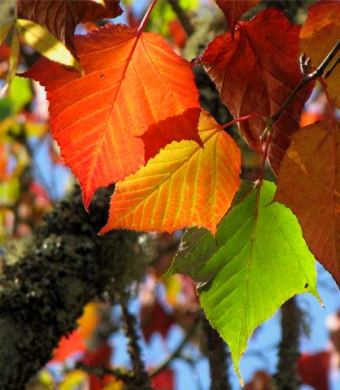Green manure crops are used in winter to replenish soil ready for planting in spring, keep weeds down and protect fallow beds from erosion.
Gerard Martin, co-owner of Kings Seeds with wife Barbara, says gardeners should grow green manure every year and rotate crops every two years.
“This breaks the cycle of goodness being sucked out of the soil and the build-up of pests and diseases,” he says. “Green manure is a natural way of putting goodness back in. [Read more by Gerard on the topic here.]
“At this time of the year you need a cool-germinating seed and I like to mix different species – such as peas, oats and lupin – together. The mix is a good nitrogen fixer and breaks down quickly.”
Crops should be cut (a lawnmower set on high can be used) and hoed in before they flower, or the bed can be turned over by spade. “I like to dig it in,” Gerard says, “because you incorporate a bigger biomass.”
Phacelia tanacetifolia is a vigorous grower that breaks down quickly when dug in and has the advantage of being unrelated to any other vegetable. If left to flower it will attract honeybees, hover flies and other beneficial insects.
“If you’re not planting until early to midsummer you can grow two manure crops and I would recommend the mix and phacelia.”
Broad beans grown in winter can be used as green manure once they’ve cropped, while frost-tender soyabeans and buckwheat are good manure crops for summer.
Mustard will take about 30 to 45 days from sowing to cutting, while the pea-oat-lupin mix will take 50 to 60 days. Although he knows a lot of people use mustard, Gerard prefers to give his ground a rest from the brassica family (read about club root here).
“Growing a green manure crop is much better than, say, fumigating the soil with a spray when you’re killing the bad insects, bacteria and fungi, yes, but the good ones too – and 95% of the bacteria and fungi in soil are good.”
Read more on the topic here and here (both English websites).
Gerard and Barbara have owned Kings Seeds, which opened in 1978, for 15 years and operate from the countryside south of Katikati.

Barbara and Gerard Martin. The warehouse at 189 Wharawhara Rd (museum is on the corner) is open to the public every Friday until noon. Photo: Sandra Simpson
Each year Kings Seeds sells (to commercial growers and home gardeners):
- 5 tonnes of peas for shoots
- 5 tonnes of purple radish seed for spouting
- 3 tonnes alfalfa seed
- 2 tonnes of wheatgrass for sprouting
- 1-2 tonnes bull’s blood beetroot seed
- 1 tonne coriander seed.
“A home gardener will buy 500g of seed at a time,” Gerard says. “A commercial grower will take 300kg every second month.”
There are 10,000 seeds per gram for watercress, while a single broad bean seed weighs 2-3g.
Some of this article was first published in the Bay of Plenty Times and appears here with permission.










